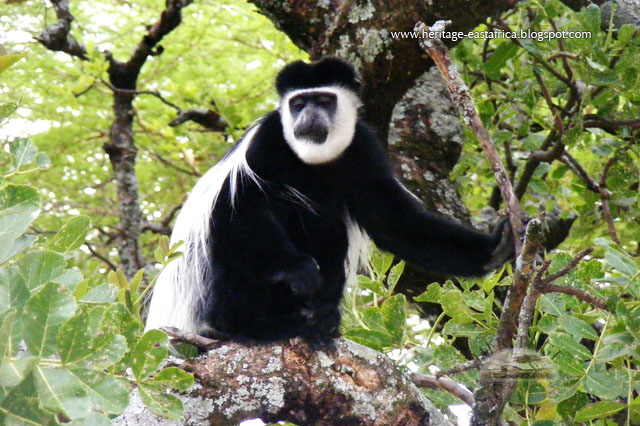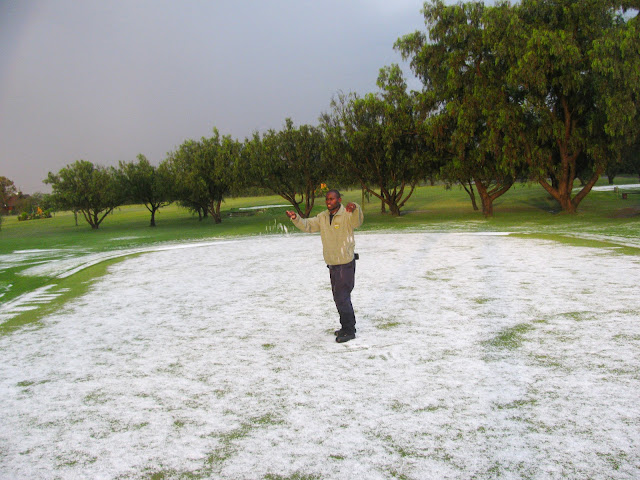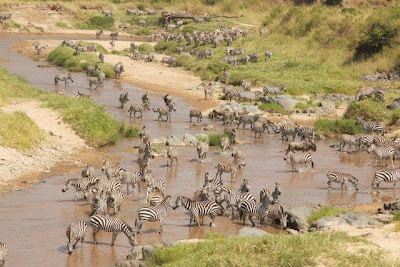The weather is great after
the recent short rains. It’s clear in the mornings and cool in the afternoons
with rain on the peripheries of the Mara.
The grass is green and fresh after
the annual world-famous wildebeest migration. The old grass was grazed upon by
the migrating wildebeest and zebras from the neighbouring Serengeti in
Tanzania.
The lactating herbivorous
females are well-fed on the fresh grass and are able to produce a lot of milk
for their young ones. In this season of
plenty, the grasslands are dotted with wild flowers in bloom.
Updates
The Domestic Migration of Wildebeest and Zebras
The herds of wildebeest and
zebras from the Loita Plains (east of the Mara Reserve) form the domestic
migration. They have not returned to their calving grounds because there has
been no rain in the area.
Therefore we are still
enjoying big herds around the Olkiombo Plains. This means that predators like
the big cats are in close range of the Mara Intrepids and Mara Explorer camps
and our guests are treated to good sightings of the cheetah, leopards and lions.
There is an abundance of other
plains game. The elephants have also come out of the bushes after the migrating
wildebeest and zebra cropped down the tall grass. The elephants are now gorging
themselves on the new shoots.
PREDATORS SIGHTINGS
LIONS
Lion
sightings are good around Olkiombo Plains.
All
the prides are coming together to strengthen their bonding. Notch and his sons are
with the Olkiombo Pride. The lioness in
the pride has two cubs aged three months. One of the cubs has a deformed foreleg
but it manages to move around.
The
Ridge Pride has also returned to its residential place after hanging around for
a month by the Olkiombo airstrip and Notch and his boys refusing to join the
pride. However a young male joined the pride from somewhere and was seen mating
with the Ridge female on recently. We do not know this
male and will keep tabs on him.
The
Paradise Pride is doing well with three males who took over from the Notch
group without a fight.
LEOPARDS
Olive mated with the Ridge
male between Olare Orok and the Rhino Ridge three weeks ago. We are expecting
the new cubs by the end of February 2013.
Bahati mated one and half
months ago near the Fig Tree rock by the junction of Talek and Olare Orok, west
of the Mara Intrepids Camp. The cubs are due by January 2013.
Olive and Bahati are still
sharing the same territory but Bahati is spending a lot of time west of Mara Intrepids
Camp. Olive is still with Saba who is ten months old, patrolling her territory
around Smelly Crossing at Olare Orok.
CHEETAH
Cheetah sightings are also
good around the Olkiombo Plains.
Malaika is with her cub aged nearly eight months. They are eight kilometers south of Mara Intrepids Camp on the Central Plain where the grass was burned. It now attracts a large population of gazelles browsing on the new shoots.
Alama with her two cubs aged
seven months is east of Mara Intrepids Camp between Olare Orok Conservancy and Maasai
Mara National Reserve.
Heritage Hotels (Kenya) manages two luxury camps in the Masai Mara - Mara Explorer and Mara Intrepids -
in the confluence of the four game viewing areas of the Masai Mara. The
camps are on the banks of the Talek River, with most tents spread along
the banks. Report and pictures by John Parmasau & Dixon "DC"
Chelule, Mara Explorer & Mara Intrepids Camp ©Heritage Hotels Ltd,
Kenya.http://www.heritage-eastafrica.com/



















































